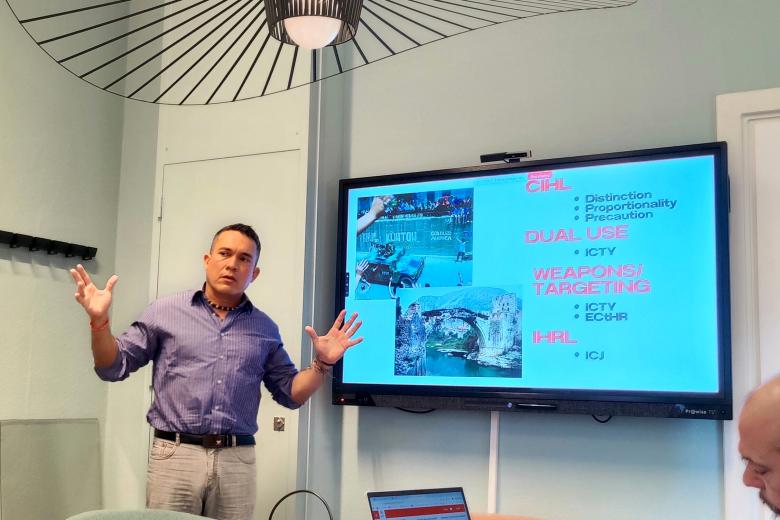Is it matter for values in step within the organization? How (mis)alignment of risk preferences of Top Management team and middle managers affect the corporate innovation
Based on the market logic, corporate innovation was mainly agitated by market competition. However, implementing the innovation strategy cannot be separated from the support within organizations. Traditionally, we focus on the impact of Top management team (TMT) on corporate strategy. However, middle managers play a vital role for the strategy implementation. Under this context, our recent study investigates the conjoint impact of TMT and middle managers’ risk preferences on corporate innovation.
Types of corporate innovation
The types of innovation were divided two types generally: radical innovation and incremental innovation. The radical innovation means the innovation based on the totally new technology and science which would bring the disruptive change for the existing market. Regarding the feature “disruptive change” of radical innovation, it normally requires the higher risk for firms. Because disruptive change means the higher investment and uncertain market reaction which is developing a totally new products for the market.
On the contrary, incremental innovation concerns the slight change and revision for existing products. The majority feature of the incremental innovation is the improvement of the existing products. For example, when Apple released the iPhone in 2007 for the first time, it is the radical innovation. Because before the iPhone, the cell phone market was dominated by function mobile phones and most customers do not have a concept of the smartphone. However, the innovation of iPhone in recent years that we can say it is the incremental innovation. Because the new iPhone in each year just concern the slight change and the upgrade of the existing products or functions. Apple did not create a new product to change the recognition of customers and create a new product which has the obvious difference with smartphones in the market.
Why the risk preferences of TMT and middle managers is matter?
Regarding the role of resources allocation within organizations, the background, psychological traits and values of TMT was attended due to these characteristics of TMT may affects their decision-making in the corporate strategy that is the classic upper echelon theory in management studies. Regarding the radical innovation requires the higher risk of firms, the risk preferences of TMT is important because it may affect the resources allocation of the radical innovation project.
Simultaneously, middle managers play a vital role in linking upward and downward. Hence, their risk preferences may affect the implementation result especially for the innovation project. This is because middle managers need to execute strategies which setting by their superiors and have the limited autonomy, their risk preference may prefer the conservative that drives for incremental innovation instead of the radical innovation activity for firms. Reversely, the aggressive risk preference of middle managers may promote radical innovation. This is because radical innovation normally requires the flexibility for middle managers to execute the project which means that they may tolerance more responsibility and risk. Based on this logic, the risk preferences of middle managers may directly affect the implementation result of the innovation project.
How risk preferences of TMT and middle managers affect the corporate innovation?
We utilize a national manufacturing survey dataset in China to test the relationship between risk preferences of TMT and middle managers and corporate innovation. Our primary result indicates the risk preferences alignment of the risk reference of TMT and middle managers would promote the innovation of firms whatever the overall innovation, incremental innovation and radical innovation. However, the high risk preference of middle managers and low risk preference of TMT also would cause the radical innovation of firms reach the relative high level. This is because TMT needs the high robust capability of management for radical innovation project, and the middle managers need the flexibility to execute the radical innovation project. Regarding the robust and flexibility requirement for TMT and middle managers respectively, the misalignment of TMT and middle managers’ risk preferences can promote the radical innovation of firms.
Conclusion
The alignment of risk preferences between the top management team (TMT) and middle managers can foster corporate innovation, which underscoring the importance of shared values within organizations. However, it does not mean that a misalignment values between TMT and middle managers is detrimental to innovation. In fact, if middle managers have a higher risk tolerance and are given sufficient autonomy to exercise flexibility in executing radical innovation projects, while TMT maintains the robust risk control capabilities, this misalignment can actually lead to more favorable outcomes for radical innovation of firms.
Also read
-
Andrés Caceres Solari on No room for Human Rights in Gaza and Ukraine: How the Law Legitimizes Urban Devastation
Pick Our Brains Session with Andres Caceres Solari

-
AMIBM hosts the final Realise-Bio conference
The Aachen Maastricht Institute of Biobased Materials (AMIBM) hosted last week the third and final Realise-Bio annual conference, bringing together the Dutch and German bioeconomy ecosystems at the Brightlands Chemelot Campus.

-
Macrophages as key to treating liver fibrosis
Sabine Daemen is researching how certain macrophages can slow down fatty liver disease and fibrosis in order to develop new therapies.
